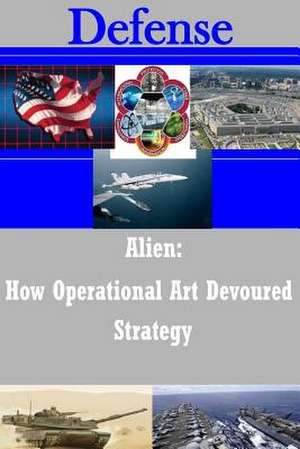Alien - How Operational Art Devoured Strategy
Autor Strategic Studies Instituteen Limba Engleză Paperback
Preț: 67.22 lei
Nou
Puncte Express: 101
Preț estimativ în valută:
12.86€ • 13.46$ • 10.71£
12.86€ • 13.46$ • 10.71£
Carte disponibilă
Livrare economică 11-25 martie
Preluare comenzi: 021 569.72.76
Specificații
ISBN-13: 9781497506428
ISBN-10: 1497506425
Pagini: 122
Dimensiuni: 156 x 234 x 7 mm
Greutate: 0.18 kg
Editura: CREATESPACE
ISBN-10: 1497506425
Pagini: 122
Dimensiuni: 156 x 234 x 7 mm
Greutate: 0.18 kg
Editura: CREATESPACE
